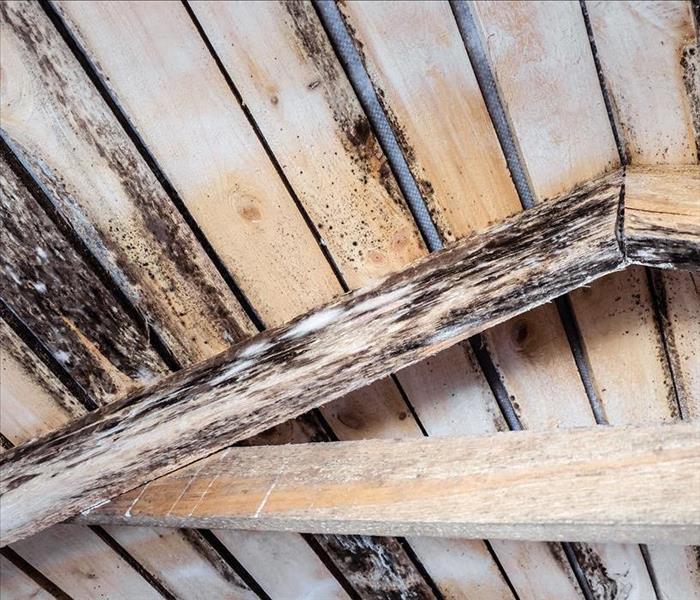A Guide to Dealing with Mold and Mildew After Water Damage
10/21/2023 (Permalink)
 Water damage in homes and properties can result in more than just physical damage and costly repairs; it can also lead to mold and mildew growth.
Water damage in homes and properties can result in more than just physical damage and costly repairs; it can also lead to mold and mildew growth.
Water damage in homes and properties can result in more than just physical damage and costly repairs; it can also lead to the growth of mold and mildew. This can pose significant risks to occupants and residents, making it a crucial issue to address in the aftermath of water damage. In this blog post, we will explore the dangers of mold and mildew, their causes, and steps to take to handle and prevent them.
Dangers of Mold and Mildew
Mold and mildew are types of fungi that thrive in moist environments and can grow rapidly after water damage. Exposure to mold and mildew can lead to various health risks, including respiratory problems, headaches, allergies, and skin irritation. Additionally, if left unchecked, mold and mildew can cause significant structural damage to the home or property, affecting walls, floors, and furniture.
Causes of Mold and Mildew
Mold and mildew growth is typically a result of excess moisture and humidity. Some common causes of water damage that can lead to mold and mildew growth include floods or heavy rain. Flooding or heavy rainfall can cause water intrusion into the property, creating the ideal setting for mold and mildew growth.
Leaks or burst pipes
Any leaks or burst pipes, regardless of their size, can cause water to flood the property, leading to mold and mildew growth.
Poorly ventilated areas
Humidity from poor ventilation in areas like bathrooms or basements can create the ideal environment for mold and mildew growth.
Long term moisture
Long-term moisture, such as that caused by roof leaks or insufficient drainage, can lead to chronic water damage, increasing the chances of mold growth.
Steps to Handle Mold and Mildew
When water damage occurs, it is critical to act quickly to prevent the growth of mold and mildew. Remove excess water using a wet/dry vacuum or similar equipment, and dry out the affected areas promptly.
Inspect the property
Carefully inspect the affected areas for signs of mold or mildew. Look for visible signs, such as fuzzy or discolored patches on surfaces, or musty odors, which are typical indicators.
Use appropriate cleaning methods
Use approved mold/mildew cleaning solutions and equipment, such as masks and gloves, to clean affected surfaces thoroughly. Properly dispose of contaminated materials and equipment to prevent further spread.
Address underlying causes
While cleaning mold and mildew is essential, it is equally vital to address the underlying cause of water damage to prevent future growth incidents. Proper ventilation, drainage improvements, and regular maintenance can help tackle the problem's source.
Prevention is Key
Prevention is the best way to avoid the growth of mold and mildew after water damage. Regular inspections, proper ventilation, and maintaining optimal indoor humidity levels can prevent the conditions that encourage mold and mildew growth. Additionally, ensuring proper drainage and handling leaks immediately can help avoid costly repairs and health risks.
Mold and mildew growth after water damage can have serious consequences for both occupants and property, highlighting the importance of acting fast and taking preventive measures. By addressing the source of water damage and following proper cleaning protocols, you can effectively handle mold and mildew, and restore your property to its pre-damage condition.





 24/7 Emergency Service
24/7 Emergency Service